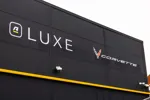Some small independently-owned retailers as well as regional and national groups have parted company with the carmaker.
The strategy was driven by revisions to block exemption that saw Toyota ditch tradition market territories towards the concept of customer driving areas – there are 96 of these, based on how far prospects will drive to buy a car. The news comes after industry rumours that Toyota was ousting small owner-drivers from the network in the wake of the new legislation. Critics believed the carmaker was forcing independent groups to sell the franchise to one of its preferred partners or was asking small dealers to meet expensive new standards for sales and servicing.
But Toyota GB commercial director Paul Philpott categorically denies these rumours. “We have not imposed a strategy of going out to get rid of small independent owner retailers. We have tried to find the right retailers for the market in which they operate,” he says.
“Partners were selected on their ability to run these new areas and we have tried to achieve a balanced mix of operators for each individual territory. As part of the change, we have parted company with dealers of all shapes and sizes in different areas of the country, and sometimes at their own request.”
Representation is now made up of independently owned sites, regional groups such as RRG and Lysters, and national retail groups with global coverage like Inchcape. Each type of partner occupies one third of the market.
To help attract talented independent retailers to the network, Toyota is sponsoring 10 new dealers which the carmaker believes have the ability to succeed but not the financial backing.
Philpott says combined sales for Toyota and Lexus are set to reach 133,500 units by the end of this year, representing year on year growth of more than nine per cent.
To underpin this growth in new car sales, the group is currently reviewing its used car and aftersales operations.














Login to comment
Comments
No comments have been made yet.